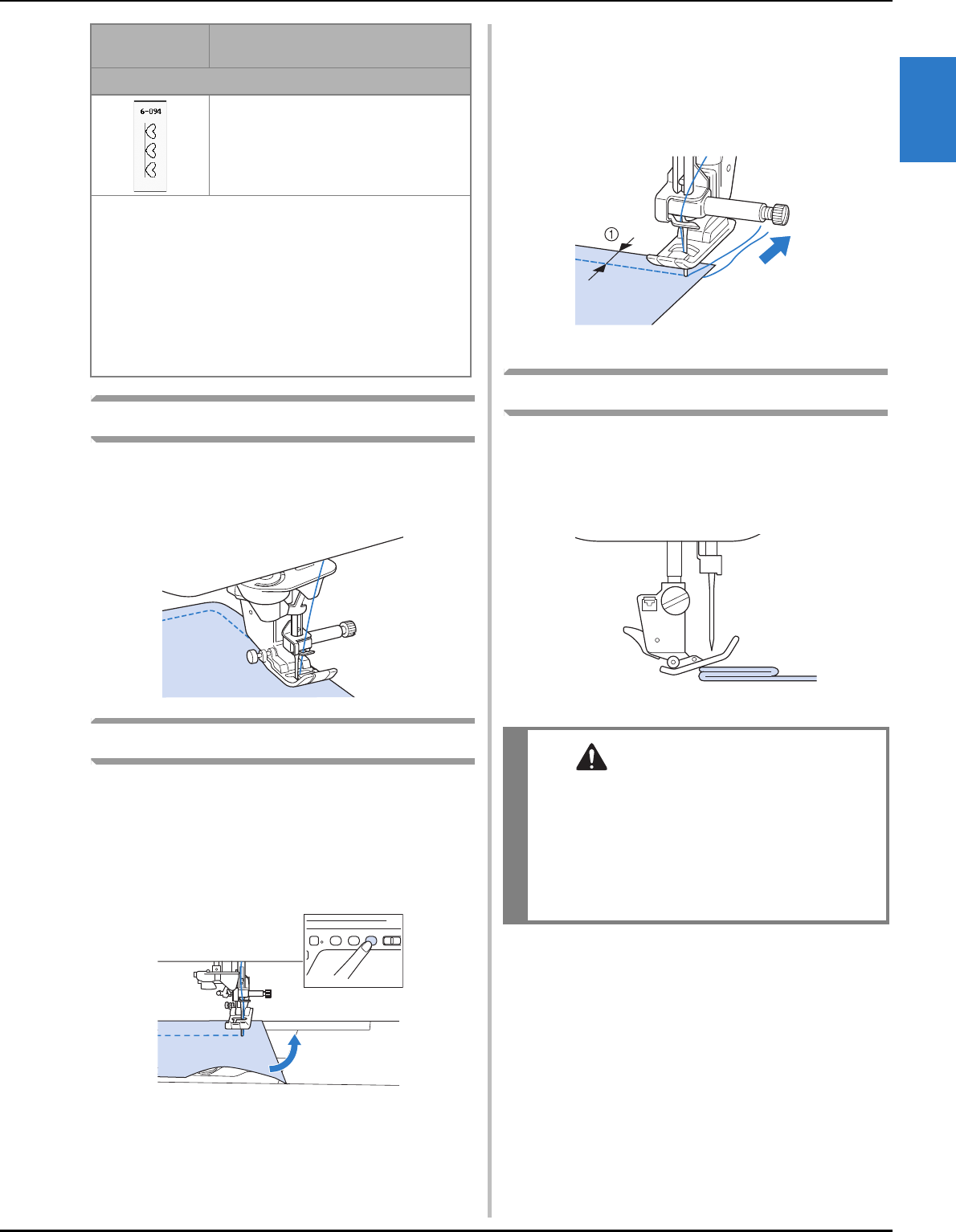
SEWING
Sewing Basics
Sewing S-7
S
1
Sewing Curves
Sew slowly while keeping the seam parallel with
the fabric edge as you guide the fabric around the
curve.
Changing Sewing Direction
Stop the machine. Leave the needle in the fabric,
and press the “Presser Foot Lifter” button to raise
the presser foot. Using the needle as a pivot, turn
the fabric so that you can sew in the new
direction. Press the “Presser Foot Lifter” button to
lower the presser foot and start sewing.
The pivot setting is useful when changing the
sewing direction. When the machine is stopped at
the corner of the fabric, the machine stops with the
needle in the fabric and the presser foot is
automatically raised so the fabric can easily be
rotated (“Pivoting” on page S-15).
■ Sewing a Seam Allowance of 0.5 cm
or Less
Baste the corner before sewing, and then, after
changing the sewing direction at the corner, pull the
basting thread toward the back while sewing.
a 5 mm (approx. 3/16 inch)
Sewing Heavyweight Fabrics
The sewing machine can sew fabrics up to 6 mm
(approx. 1/4 inch) thick. If the thickness of a seam
causes sewing to occur at an angle, help guide the
fabric by hand and sew on the downward slope.
Character/Decorative stitch
“Reinforcement Stitch” button ON: Reinforcement stitch after
finishing the motif currently being sewn.
“Reverse Stitch” button ON: Sewing operation stops
immediately.
* With the automatic reinforcement stitching function, the
machine automatically sews reinforcement stitches at the
beginning of sewing.
The light beside the “Reinforcement Stitch” button lights up
while the machine is sewing the last motif. It automatically
turns off when sewing is stopped.
Stitch
(Example)
Stitch name
Applications
CAUTION
• Do not forcefully push fabrics more than
6 mm (approx. 1/4 inch) thick through the
sewing machine. This may cause the needle to
break and cause injury.
• Thicker fabrics require a larger needle
(“CHANGING THE NEEDLE” of “Basic
operations”).


















